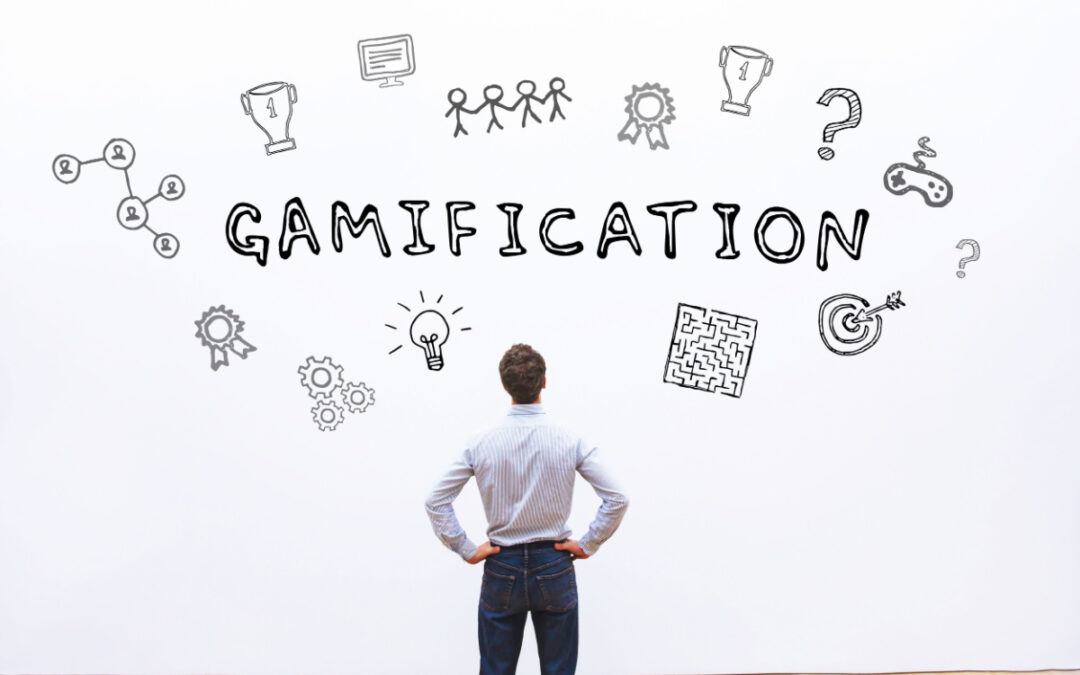Introduction: The Power of Gamification in Business
Hey there, fellow American small business owner! Ever wondered how to make your business processes more engaging and, dare we say, fun? Enter gamification. At its core, this is the art of applying game-like elements to non-game contexts. Think of it as a secret sauce that can spice up your business, making it more interactive and enjoyable for both your employees and customers.
The Psychology Behind Gamification: Why Do We Love Games?
Intrinsic vs. Extrinsic Motivation:
At the heart of gamification lies the understanding of human motivation. Intrinsic motivation comes from within, like the joy of learning something new. Extrinsic motivation, on the other hand, is driven by external rewards, like badges or points. Gamification masterfully blends both to drive engagement.
The Natural Desire for Competition, Achievement, and Reward:
Humans are wired to compete, achieve, and be rewarded. Remember the thrill of winning a board game or leveling up in a video game? That’s the power of gamification at play, and it’s a feeling you can bring into your business.
Benefits of Gamification in Business: More Than Just Fun and Games
Increased Engagement and Participation:
Gamification can turn mundane tasks into exciting challenges. This boosts participation rates, whether it’s employees engaging more with training programs or customers interacting more with your brand.
Enhanced Learning and Training Outcomes:
Interactive gamified training modules can make learning more effective. Employees retain information better when they’re having fun!
Improved Customer Loyalty and Retention:
Loyalty programs with gamified elements (think points and rewards) can make customers feel valued, encouraging repeat business.
Boosted Employee Morale and Productivity:
When work feels like play, employees are happier, more motivated, and more productive.
Key Gamification Tactics and Their Magic
a. Points System:
How it works: Assign points for tasks or achievements.
Benefits: It’s simple but powerful. Points drive repeated actions and foster a sense of competition.
b. Leaderboards:
How it works: Rank users based on their achievements or points.
Benefits: Nothing fuels the competitive spirit like a leaderboard. It’s a great way to recognize top performers and motivate others.
c. Badges and Achievements:
How it works: Award badges for milestones or challenges.
Benefits: Badges are like virtual pats on the back. They give a tangible sense of accomplishment.
d. Levels and Progression:
How it works: Structure tasks in levels.
Benefits: Levels give users a roadmap, encouraging them to keep going and reach the next milestone.
e. Challenges and Quests:
How it works: Set up specific missions for users.
Benefits: Challenges add an element of adventure, making tasks more engaging.
Case Studies: Gamification in Action
Several American small businesses have embraced gamification with open arms. For instance, a local coffee shop introduced a mobile app where customers earn points for every purchase, which they can later redeem for freebies. The result? A significant boost in sales and customer loyalty. Another example is a tech startup that gamified its employee training program, leading to improved skill retention and job satisfaction.
Potential Pitfalls: Tread Carefully
Gamification is powerful, but it’s essential to avoid some common pitfalls:
- Overcomplicating the Process: Keep it simple. Overly complex systems can confuse users.
- Not Aligning with Business Objectives: Ensure your gamification strategy aligns with your business goals. It’s not just about fun; it’s about results.
- Avoiding Perception of Manipulation: Gamification should feel genuine, not like a ploy to get more from your employees or customers.
Tools and Platforms: Getting Started with Gamification
There are several gamification platforms out there, like Badgeville and Bunchball. Do your research, consider your business needs, and choose a platform that fits. Remember, it’s not about the fanciest tool but the one that aligns best with your objectives.
Conclusion: The Game-Changing Power of Gamification
In the dynamic landscape of American small businesses, gamification emerges as a game-changer (pun intended!). It’s not just about making business fun but about harnessing human psychology to drive engagement, loyalty, and results. So, why not give gamification a shot? Start small, gather feedback, and watch your business transform.
—
Are you using gamification in your business? If not, get your free 15-minute strategy call with us here and find out how we can help you.


Recent Comments